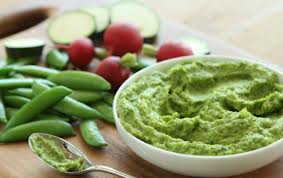How Wolfgang Puck Lost 20 Pounds
I first met Wolfgang Puck in 1985, when I was a waiter at a five-star hotel in Los Angeles. He was a consultant to the company that owned the hotel, and would occasionally drop by. Even if I hadn't known he was the city's most celebrated chef, I would've noticed how the center of gravity shifted whenever he was in the kitchen. Everyone from the managers and chefs to the line cooks and waiters acknowledged his presence.
Jump ahead 24 years, to late 2009. I got a call from my friend Chad Waterbury, a trainer in L.A. and author of Huge in a Hurry. Chad told me he's been working with Wolfgang for the past year, with amazing results.
That part wasn't a surprise; Chad doesn't work with people who aren't willing to train seriously, no matter how famous they are. But I wasn't expecting what he said next: Would I be interested in meeting with Wolfgang to talk about a possible book based on his new, healthier lifestyle?
Wolfgang and I met a few months later in New York. I'd seen him on TV many times since my food-service days, and could see the difference right away. But what really impressed me was that he didn't seem impressed by the 20 pounds he'd lost, or the muscle he'd gained. Numbers, in fact, don't motivate him at all, which is why it took him until his late 50s to find a workout program that made sense.
"It always seemed very boring to me, going to the gym," he told me. "It always felt weird. Maybe it's good to have strong arms when you sit down to bench press. You can look in the mirror and flex and say 'wow!' But I'm not after that."
His goals, he told me, were entirely based on feel and function. He works at least 10 hours a day, six days a week, and often spends much of that time on his feet. He's been doing this since he was 14. (He was 60 at the time.) In his downtime he skis in the winter and plays tennis when he can. Nothing matters if it doesn't help him feel better at work and perform better in sports.
That extremely practical approach carries over to his new approach to food, and the changes he made to many of his classic recipes, which you'll find in his new book, Wolfgang Puck Makes It Healthy.
Healthy food, but not "health food"
To Wolfgang, the phrase "health food" has a punitive aspect, as if the crime of being overweight means you don't deserve anything with flavor. "I want taste," he said. "If it doesn't have taste, I don't want it."
That said, he understands as well as anybody why the tastiest foods have typically been the highest in calories. In his early days in Los Angeles, he was the chef at Ma Maison, a French restaurant. Their most popular fish entrée came sealed in a puff pastry. "It tastes great," he conceded. But puff pastry is half butter and half flour. "Just the crust alone has a lot of calories."
Another popular dish was the warm lobster salad. "I made the vinaigrette with emulsified butter. When I told them it was a black truffle butter, nobody bought it. When I said it was a warm truffle vinaigrette, it flew out the door. But it was still 100 percent butter."
He got away from that style of cooking when he opened the original Spago on the Sunset Strip in 1982, with an emphasis on grilled food and vinaigrettes made with olive oil and fruit juices instead of butter. But even though the food he served customers was lighter, he had little success making himself lighter.
"I tried the Atkins Diet, back when it was new," he said. "I've tried diets where I cut out all the sweets, things like that. I lost weight, but it takes longer to lose it than to gain it back."
So when he started his new training program, and decided to eat better to support the workouts, he faced two big challenges:
1. How can he change the way he eats — at home, at work, and in his travels — to stay lean and avoid regaining the weight he'd lost?
2. How could he reengineer his brand, including some classic recipes, to help others lose weight and keep it off?
The first part was a matter of self-discipline: Whereas before he would sometimes go all day without eating, and then eat massive amounts when the adrenaline wore off and hunger kicked in, he conditioned himself to eat breakfast with his two young children every morning when he's home.
At his restaurants he eats throughout the day, but never a lot of any single thing. A key decision was not to rule out any food entirely. The palate of a chef like Wolfgang is exquisitely tuned; to say he won't sample something because it has sugar or fat is like a world-class musician deciding he'll no longer listen to particular notes.
And when he's in L.A., he typically goes home for dinner with his family before he returns to work in the evening. It's those dinners — the way he cooks at home — that became the model for the recipes in Wolfgang Puck Makes It Healthy.
Simple, but not easy
"These are very simple recipes," he said. "I went away from doing restaurant-type recipes, where you need three assistants to make one dish."
To make it simple for the end user he had to make it really hard on himself. It's the first time he's included nutritional breakdowns for his recipes, and that's a lot more complicated than I ever would've imagined. That's why the book is only now reaching readers, four years after I first met with Wolfgang. The process was twice as long as any other book I've worked on.
Here's the challenge: In a restaurant a chef doesn't cook from a recipe. He works on a dish until it tastes the way he thinks it should. Only then, when it meets his standards, will he offer it to his customers. He can't tell you how many calories it has, or how many grams of fat, or how many milligrams of sodium. It either tastes right, or it doesn't.
But when every component is measured and quantified, now there are two standards to meet. Wolfgang tried to make everything in the book, from appetizers to desserts, as light as possible. (Most of the entrées have fewer than 600 calories.) But they still have to taste like his creations. He and his longtime recipe writer, Norman Kolpas, tested each of the book's 100-plus dishes multiple times.
"I think there is a common thread in all the recipes," he told me in a later conversation. "It's like in painting, or in music. You'll recognize the music of the Beatles or Rolling Stones right away. You know it's them, even if you're not a musician. In food, it's very similar."
The recipes may have common threads, but the motivation for inventing or reinventing them is a new one for him. For the first time in his life, the 64-year-old chef has found a fitness and diet system that works for him. He's been committed to both for five years and counting, with results he appreciates on a daily basis.
"Twenty years ago, I would go skiing, and the next day, I could barely stand it," he said. "It used to hurt forever. Now, I feel perfectly fine. It should be exactly the opposite. And it would be the opposite, without this program."
The following recipe is from Wolfgang Puck Makes It Healthy (Grand Central, 2014).
Spanish-Style Flat Omelet with Bell Peppers and Ham
What you'll need:
Olive oil-flavored nonstick cooking spray
1/2 cup diced red bell pepper
1/2 cup diced yellow bell pepper
1/2 cup diced green bell pepper
1 garlic clove, finely chopped
1/2 jalapeño, stemmed, seeded, deveined, and finely chopped (optional)
1/2 cup peeled, seeded, and diced tomato
Kosher salt
Freshly ground black pepper
2 large eggs
12 large egg whites
1/4 cup pitted Kalamata olives, sliced
3 ounces thinly sliced lean cured ham, cut into thin ribbons
6 basil leaves, cut into fine strips
How to make it:
1. Preheat the oven to 400 degrees F.
2. Heat an 8-inch ovenproof, nonstick skillet over medium heat. Spray with nonstick spray. Add the peppers and sauté, stirring occasionally, until they have softened and their edges begin to turn golden, about 5 minutes. Add the garlic — and, if you like, the jalapeño — and sauté until fragrant, about 30 seconds longer. Season to taste with salt and pepper. Add the tomatoes and cook for 2 minutes more.
3. Meanwhile, put the eggs and egg whites in a large bowl. Season to taste with salt and pepper and whisk until thoroughly blended. Add the egg mixture to the skillet and stir constantly over medium heat until curds start to form. Continue cooking until the mixture has begun to set but is still fairly moist.
4. Remove the skillet from the heat and scatter the olives and ham over the top. Put the skillet in the oven and cook until the omelet is completely set but still slightly moist, about 5 minutes.
5. If the eggs on top still look a little moist for your liking, pop the pan under the broiler for 1 to 2 minutes until they are set and light golden.
6. Set the skillet aside to let the omelet settle for about 5 minutes. Sprinkle with the basil. Cut it into wedges and serve hot, lukewarm, or even cold. Serves 4 to 8.
Per Serving (1/8 of the omelet): 150 calories; 5g fat; 6.5g carbs; 2g fiber; 18g protein.
-
Diet Strategies: The Cookie Diet
Eat cookies and watch the pounds melt away. Ever heard this claim? Cha
-
Weight Loss: Low Calorie Breakfast Eggs
Yolking your diet could rein in your appetite. Saint Louis University
-
Butter for Heart Health?
Since we got a head start and talked about health benefits of dark cho
-
Arm Exercises: Side Press
Bending Side Press Use two hands to hoist the barbell or EZ-curl bar t
-
Stick to your weight loss goals with this Abs Diet home workout
Cages arent just great for zoo animals and in-laws; theyre also a grea
-
What is the DASH Diet?
You’ve declared some lofty weight-loss resolutions for 2014. Besides t
- DON'T MISS
- Diet Str egies: Stop Childhood Obesity
- Kentucky Derby + Coconut Water Cocktail = Awesome!
- 4 TASTY Halloween Alternatives
- 7 Tips From Belly Off! Users:
- Eat Fast, Get Fat
- Diet Strategies: Fat Burning Metabolism
- Weight Loss News: Eyesight, Yogurt and Kids
- Is Obesity the Government’s Business?
- TNT Diet: Frequently Asked Questions
- Bet on Weight Loss




